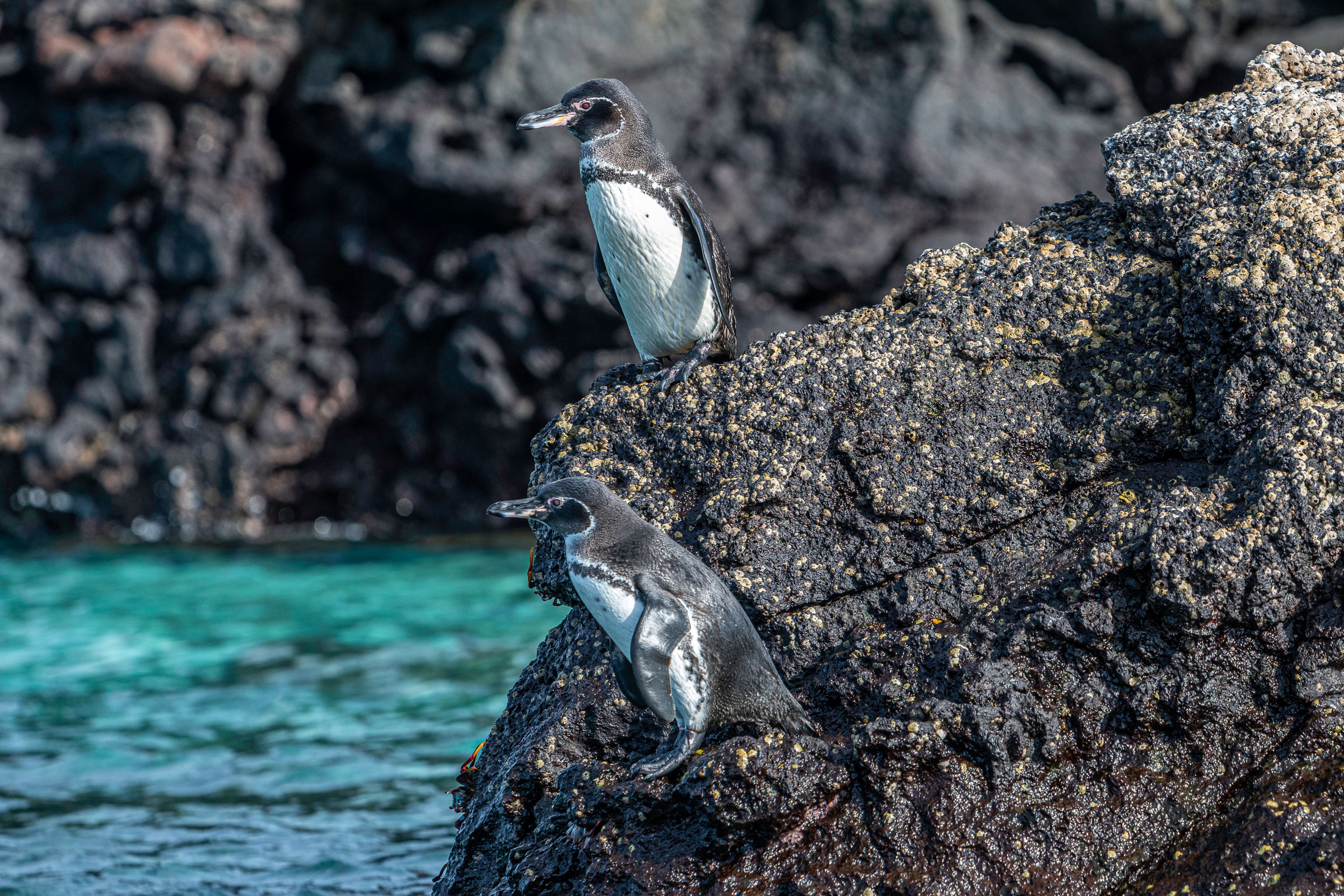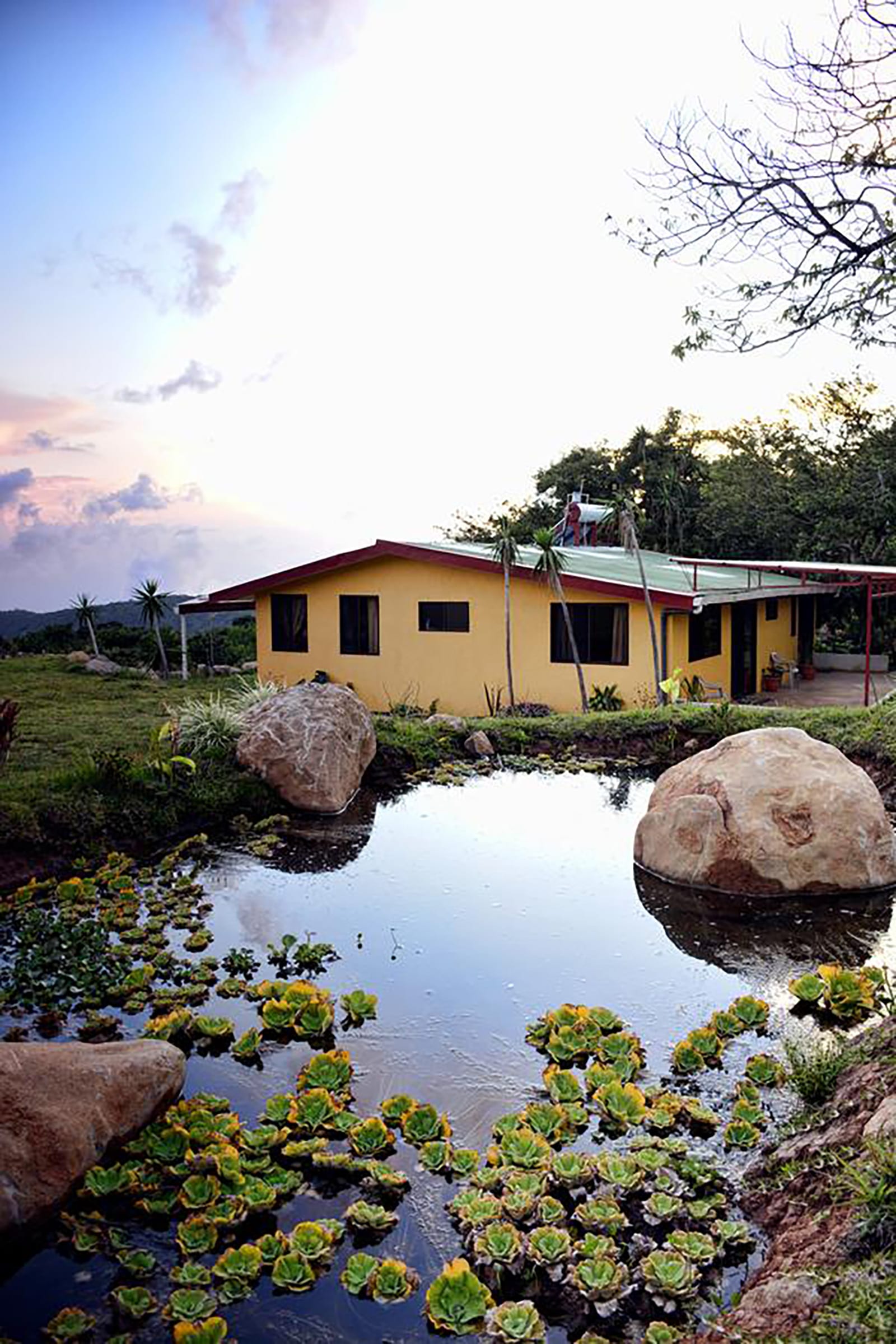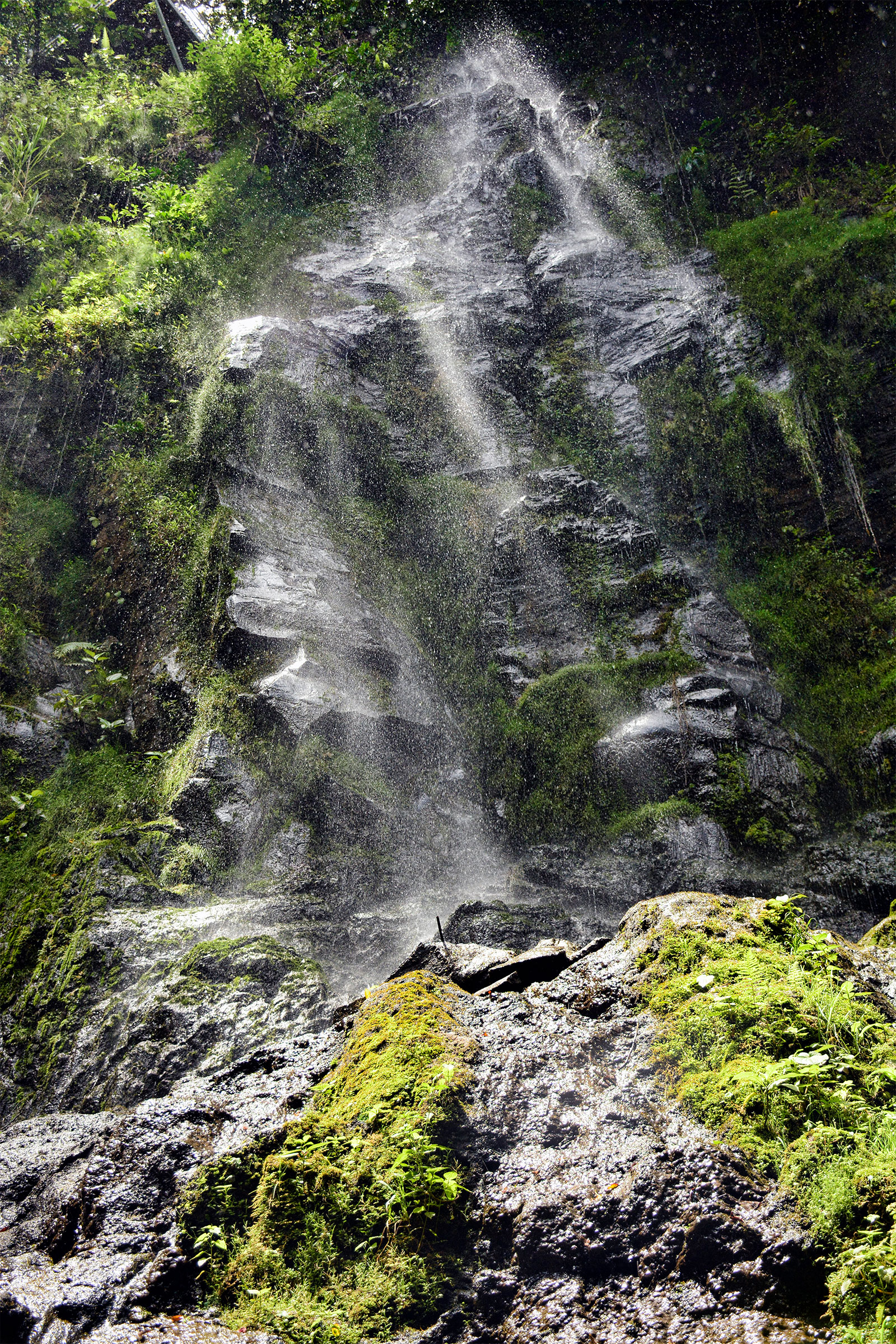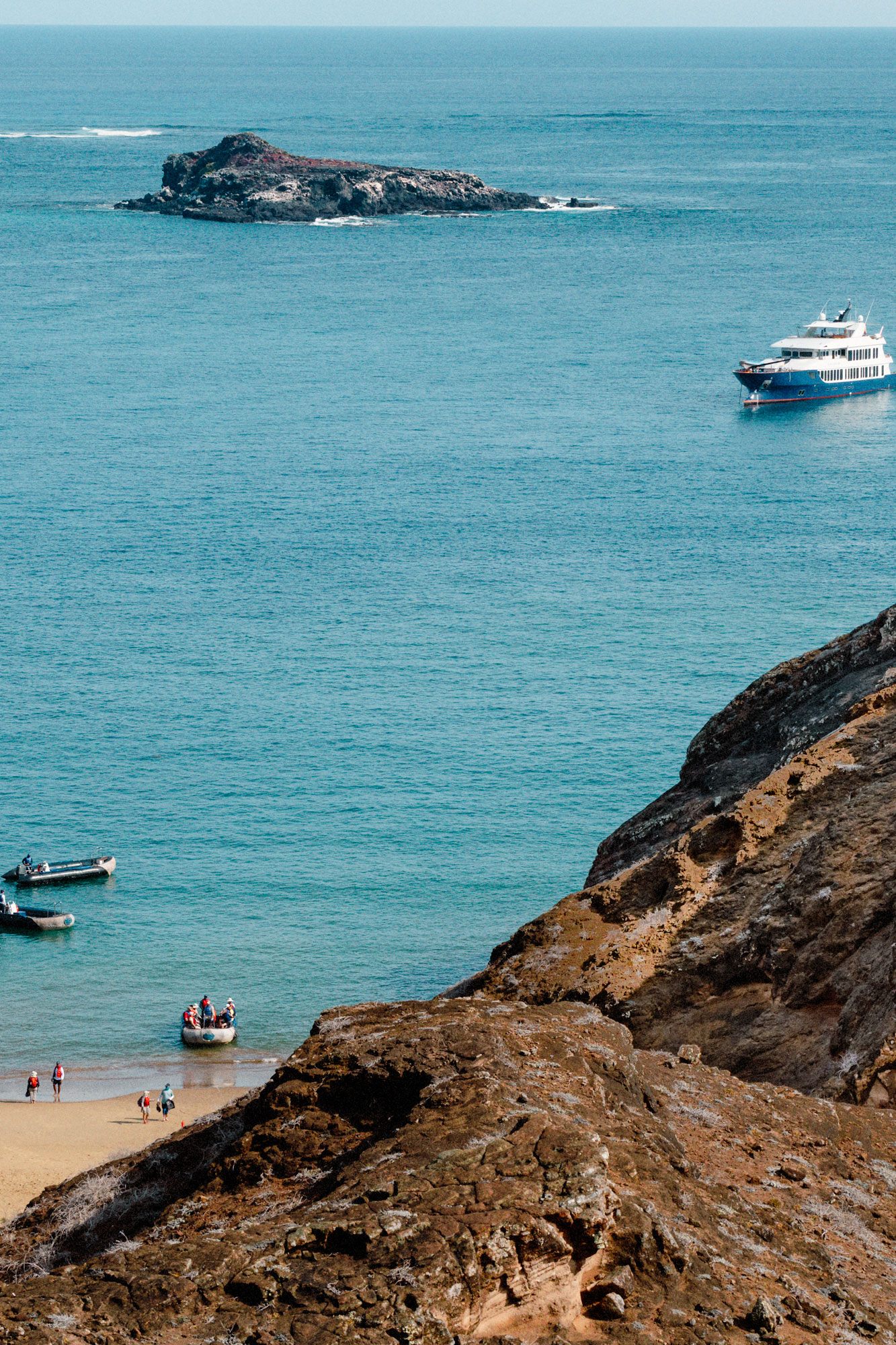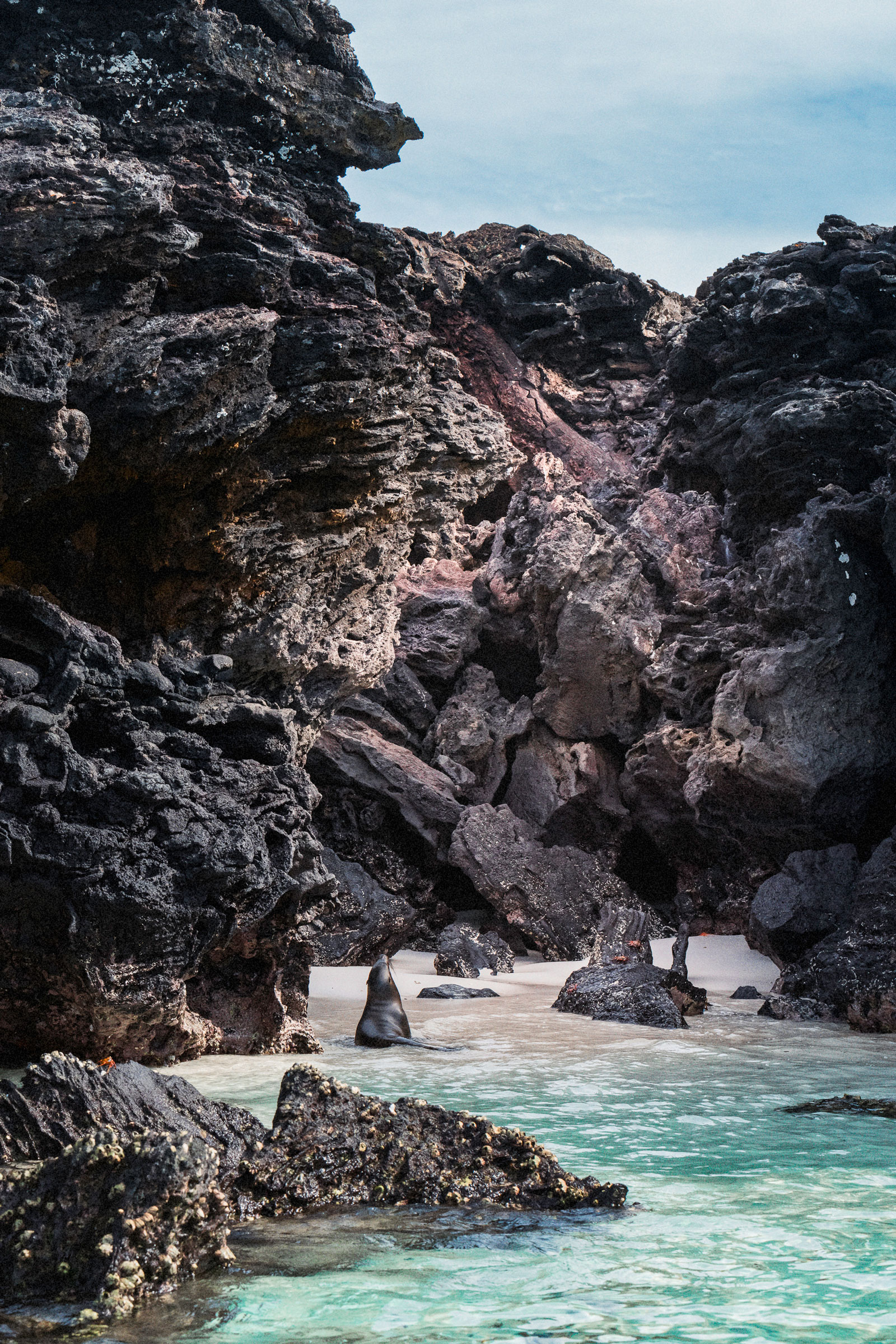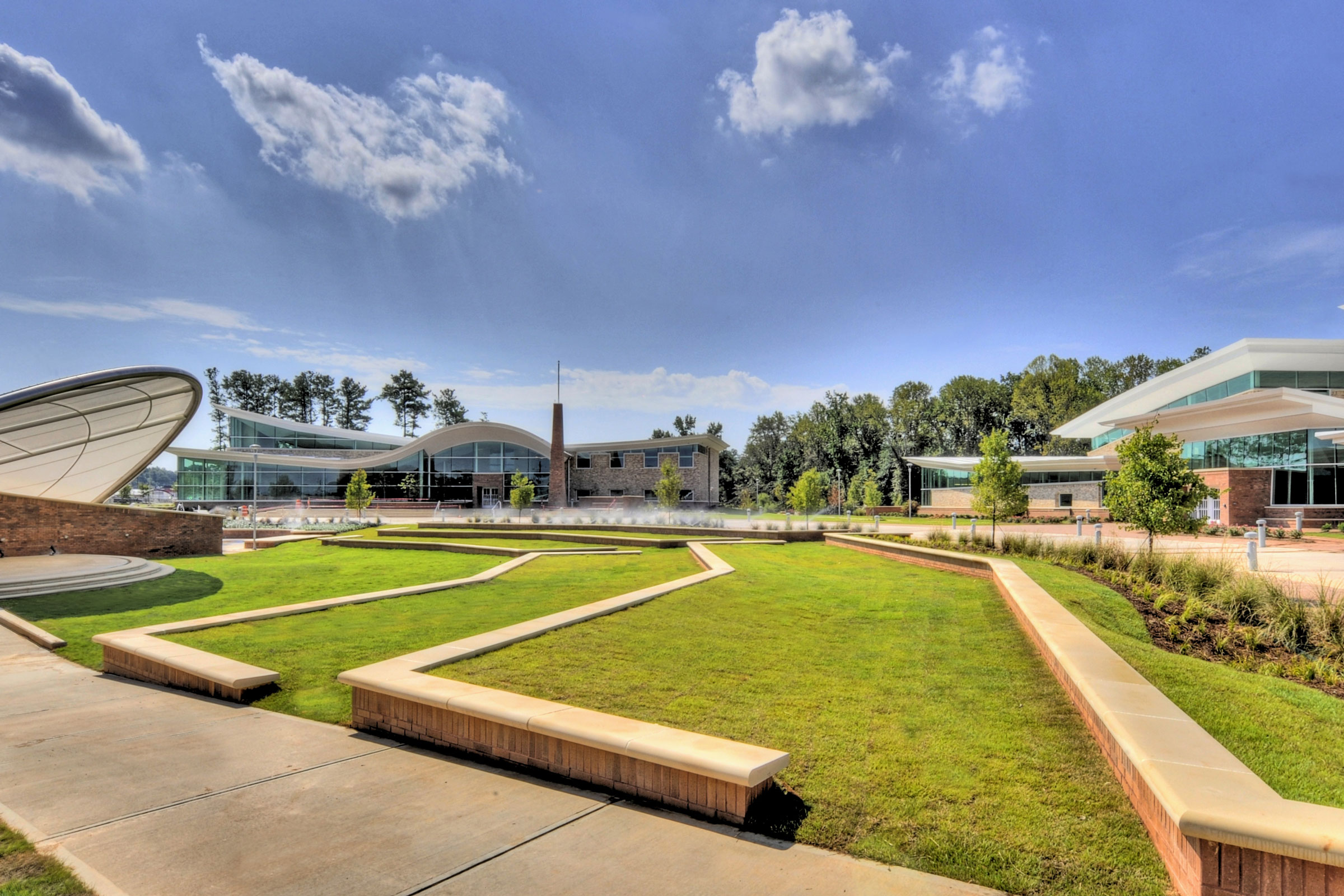Story at a glance:
- Sustainable tourism refers to responsible traveling with respect to people and the planet.
- Sustainable tourism has an essential role to play in meeting the United Nations’ Sustainable Development Goals.
- Design teams contribute to sustainable tourism by creating green lodging designated sustainable by reputable programs.
Designers and builders are important players in meeting the sustainable development goals (SDGs) surrounding sustainable tourism as outlined by the United Nations. Their work in creating green lodging is crucial in this endeavor.
Let’s explore what sustainable tourism means for designers and builders in the context of the UN’s SDGs.
What is Sustainable Tourism?
Sustainable development is defined by the United Nations World Tourism Organization as tourism that takes full account of its current and future economic, social, and environmental impacts—addressing the needs of visitors, the industry, the environment, and host communities.
This may mean visitors engaged in sustainable tourism are welcomed guests in other countries when they respect the culture of the host country’s citizens and the environment in areas designated for tourists. Another term for this is responsible tourism.
Sustainable tourism benefits both the present and future economic viability of the host country and its people. This entails stable employment by host country nationals that contributes to poverty’s alleviation.
Since the tourism industry employs one out of 10 people on earth, this aspect of sustainable tourism is critically important. The economies of a few island countries— Maldives, Bahamas, and Aruba, for example—rely almost exclusively on tourism to be viable.
Ecotourism is a subcategory of sustainable tourism that emphasizes environmental resources as a key part of tourism development, maintaining essential ecological processes and helping to conserve natural heritage and biodiversity.
In a practical sense an ecotourist is someone who uses water and energy wisely, does not degrade the physical environment, and conserves biodiversity of the host country.
Sustainable tourism efforts might also restrict the number of tourists in a certain place to limit ecosystem degradation or sell only products and goods produced by host country nationals to promote long-term economic sustainability.
In both theory and practice, sustainable tourism generally and ecotourism specifically should enable the attainment of the universal 2030 Agenda for Sustainable Development and the SDGs as advanced by the United Nations. These are the 17 SDGs:
1. No poverty
2. Zero hunger
3. Good health and well-being
4. Quality education
5. Gender equality
6. Clean water and sanitation
7. Affordable and clean energy
8. Decent work and economic growth
9. Industry, innovation and infrastructure
10. Reduced inequalities
11. Sustainable cities and communities
12. Responsible consumption and production
13. Climate action
14. Life below water
15. Life on land
16. Peace, justice, and strong institutions
17. Partnerships for the goals
Path Destination Management proposes three pillars of sustainable tourism: environmental sustainability, social sustainability, and economic sustainability (or planet, people, and profits).
Benefits of Sustainable Tourism
- Photo courtesy of Monteverde Inn
- Photo courtesy of Monteverde Inn
There are several benefits of sustainable tourism:
- Has a lower carbon footprint than conventional tourism
- Keeps animals in their native ecosystems rather than in captivity
- Supports local communities economically
- Preserves the local cultural heritage
- Enriches your travels
What is Green Lodging?
Green lodging is a term for hotels, inns, B&Bs, and hostels that practice best sustainability practices. The Green Lodging Trends Report produced by Greenview Hospitality is the leading document that provides information on the 27,000 hotels in 54 countries that participated in the biannual rating survey.
The 12 key sustainability criteria by which hotels are rated are summarized below:
- Measure and reduce energy use
- Measure and reduce water use
- Identify and reduce waste
- Measure and reduce carbon emissions
- Linen reuse program
- No single use plastic straws or stirrers
- Replace single use plastic water bottles
- Replace single use plastic mini toiletry bottles
- Green cleaning products
- Vegetarian options
- Community benefit
- Reduce inequalities
What is the EarthCheck Certification?
Since 1987 the EarthCheck certification is a recognition of excellence in sustainable travel and tourism by a scientific and business advisory group given to “tourism businesses, hotels, destinations, governments, developers and building designers, terrestrial and marine parks, and events.”
LEED Certification
Designers and builders can achieve LEED certification for hospitality and venue projects, including hotels. Motels, resorts, convention centers, stadiums, arenas, and other public assembly spaces are also eligible for LEED certification include. The certification may apply to new builds and major renovations.
By achieving LEED, green venues associated with sustainable tourism may bolster their likability by tourists wishing to support only sustainable businesses during their travels.
Examples of Sustainable Tourism
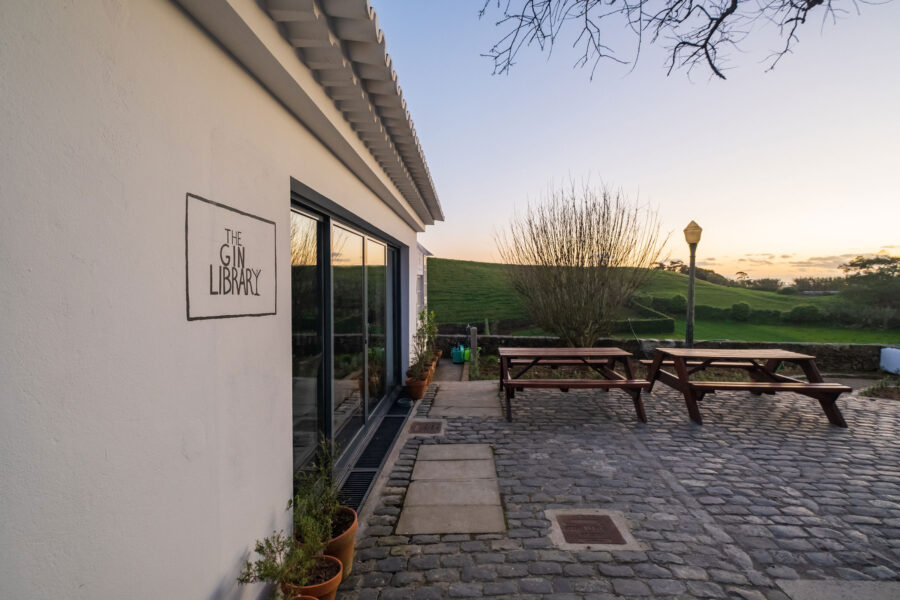
The Gin Library at Solar Branco was the property’s former stables. Photo by Rui SoaresAs sustainable tourism increasingly goes mainstream, it’s becoming easier to find green lodging as a tourist. Here are a few examples from around the world.
Ecoventura, Galápagos Islands
- Our Zodiac boats arrive on the shore of Punta Pitt. Photo by Chris Howe
- Photo by Chris Howe
The Galápagos Islands are one of the most elusive and biodiverse destinations in the world; 98% of the land here is a national park, and 97% of the reptiles and 80% of the birds here cannot be found anywhere else in the world. It’s the land that helped spark Darwin’s On the Origin of Species and has captured the imaginations of nature lovers worldwide.
Tour operators like Ecoventura are setting the criteria for sustainable tourism practices. In 2000 Ecoventura received the Smart Voyager ecological certification, which sets standards like producing fresh water onboard and implementing waste management and recycling programs. The company also hires locally, uses locally sourced products and food for their tours, and implements water and energy conservation practices.
Solar Branco, São Miguel, The Azores

Today the property that is the Solar Branco Eco Estate is home to impressive grounds, from the flowers and fruit-bearing trees to the boutique hotel accommodations, restored ruins, and even a bit of an accidental animal refuge. Photo by Rui Soares
Solar Branco Eco Estate on São Miguel Island opened is an evolving adaptive reuse project that opened to visitors in summer 2023 and dates back to the 19th century.
“We wanted to take something that was old and crumbling and restore it to something beautiful and comfortable,” says co-owner Caroline Sprod.
The hotel produces zero food waste, runs largely on solar, and educates guests about how they can make a difference environmentally.
Educating guests is a large part of Solar Branco’s mission, as the owners love showing people around and talking about the hotel’s truly environmental practices. Solar Branco aims to achieve at least 80% energy use from renewable sources like the solar panels on the property, for example, and they strive to keep all of the grass natural.
“A lot of so-called eco hotels have perfect cricket grass, which of course doesn’t have any flowers for the bees. There are hotels here where you see that it’s all beautifully manicured, but it’s no good for the wildlife. We explain to people that we don’t cut the grass because we want to keep the wildflowers for butterflies and insects. You have to maintain it a bit, but we try to keep it as natural as we can,” says co-owner Ali Bullock.
Jade Mountain Resort
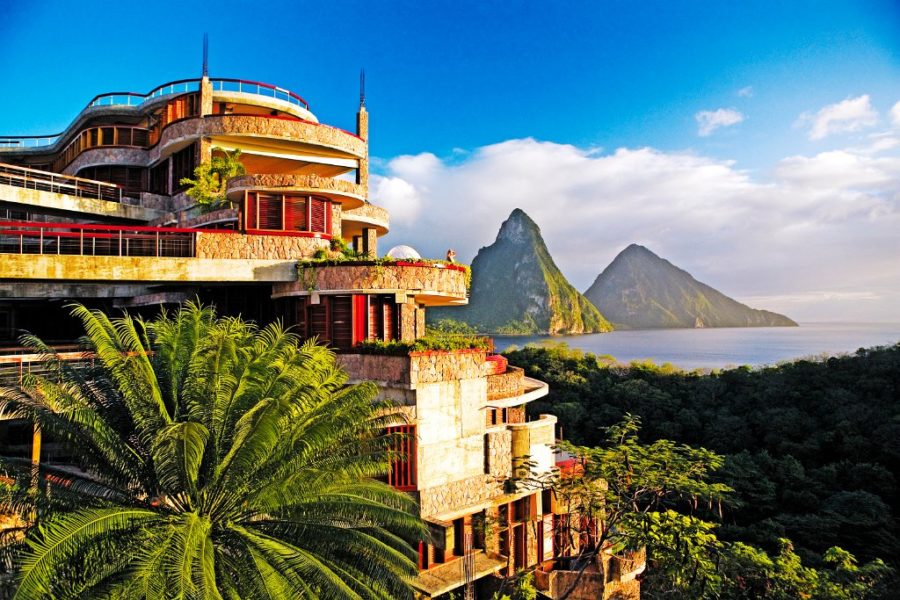
Photo courtesy of Jade Mountain
Jade Mountain Resort is the first Caribbean hotel to achieve LEED Gold.
“We aimed to give our guests the feeling of entering a private space fully integrated into the island’s ecology, where they could simply relax, breathe in the air while basking in the surroundings and enjoying a wonderful sense of calm and peace—versus being boxed into a traditional hotel room breathing recirculated, machine-processed air,” Nick Troubetzkoy, architect and owner of Jade Mountain, said in a previous interview with gb&d.
Il Borro, Italy
Il Borro is a Tuscan hotel situated in an alpine community of small family farms and vineyards.
“The principles of biodynamic cultivation and sustainability are evident in numerous projects on the estate,” says Salvatore Ferragamo, assistant director of Il Borro, in an earlier interview with gb&d. “Solar power, electric vehicles, and the construction of a biomass power plant have all minimized our impact on the environment.”
Ferragamo says Il Borro is a negative carbon footprint property; each guest looks to save 105 kilograms of carbon dioxide emission per day.
Stokkøya Sjøsenter
Building a sustainable Norwegian island resort has taken years of planning and a lot of teamwork. “We used a lot of recycled materials to build furniture, and we brought in students to build furniture,” Ingrid Langklopp, the business developer at Stokkøya Sjøsenter, says to gb&d in an earlier interview. “We used old sails to make curtains; we picked up things from the ship graveyard to put on the wall.”
“We were pretty excited about running a sustainable festival, reducing single use plastic by 80% the first year.” Wenche Bendixvold-Ryjord, manager of the Stokkøya Festival relates to gb&d in a precious story. “The audience embraced the concept and almost made it into a sport cleaning up after themselves. People are getting it, they are helping us, and as a result we leave smaller footprints.”
Monteverde Inn
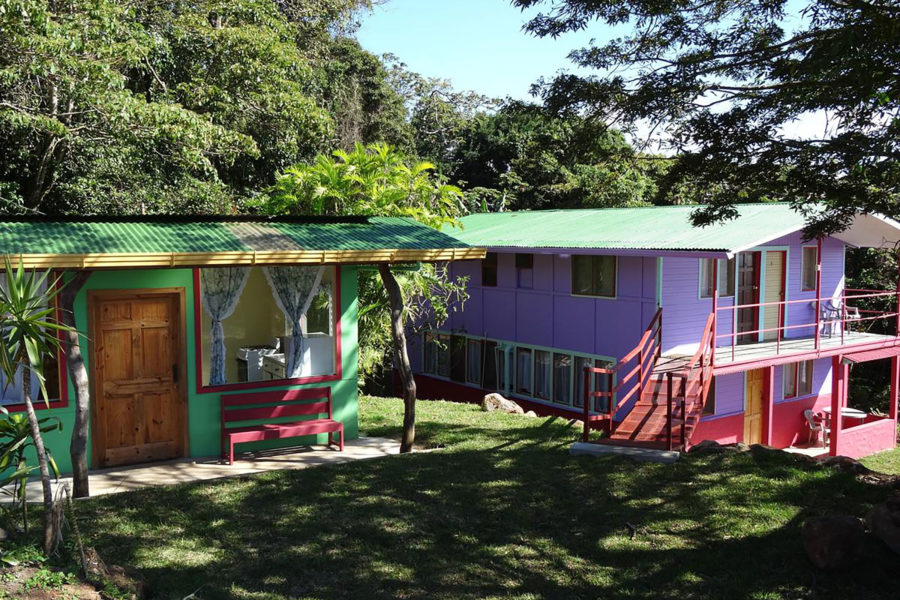
Photo courtesy of Monteverde Inn
Everybody who checks in at the secluded Monteverde Inn learns about permaculture, or the system that works to integrate human life in nature in a way that’s self-sufficient and doesn’t harm the environment.
“We’re using tourism as a microphone to talk about sustainable practices, whereas other places are just trying to keep businesses open and attaching the word ‘eco’ to it,” says owner Jonah Chaffee.
Monteverde Inn was one of the first hotels to open in this region of Costa Rica 35 years ago, but Chaffee says it’s not like other “eco” lodging options out there. Beyond having an incredible trail system with phenomenal views, waterfalls, and hammocks in the trees, the property is no frills and every amenity is considered for how it relates to nature. You’ll find solar water heaters and a solar drying room for towels, a massive greywater project, composting projects, aquaponics, and more.

